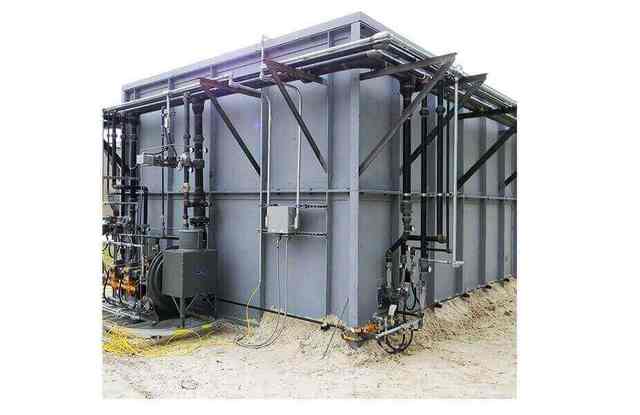Industrial furnaces use a range of fuels and forms to heat materials of many kinds to extremely high temperatures. Heat-treating metals for annealing, tempering, carburizing, and pre-treating materials for forging are common uses for industrial furnaces. Although Industrial Furnace is commonly used to treat metal, other materials such as glass and ceramics are also heated to prepare them for shape.
Different Varieties Of Industrial Furnace:
Industrial Oven and furnaces heat materials for processing, but there is a significant difference between them. The temperature range is the most noticeable difference, but there are other distinctions. For the most part, ovens function between 250- and 900 degrees Fahrenheit, while furnaces can achieve temperatures of up to 2000 degrees Fahrenheit or more. A heating process can be described in one of these ways.
Furnaces for the Industrial Sector” Industrial furnaces have grown in importance as industrialization has advanced and are used in various applications. Metals were heated in industrial furnaces thousands of years ago for molding and shaping only. This particular furnace model was the only one available from the time of its conception and for many years afterward.
Blast Furnaces:
Large towers or cylinders with a heat-resistant liner make up a blast furnace. Ventilation fans move hot air and gases through the heating system. Incoming air pushes ore, fuel, and limestone to the top of the furnace, where they are subjected to a chemical reaction as they travel down the cylinder. As a result, the bottom of the furnace is filled with molten metal and slag, and the flue gases rise and exit the top of the furnace.
Metals are melted in blast furnaces, and liquid iron is extracted from iron ore in this kiln. Blast furnaces are primarily used because of their ability to smelt metals twice as quickly as ordinary furnaces. Lead, copper, and other metals are melted and processed in these furnaces.
Electric Furnaces:
Materials that are resistant to heat are utilized in their design. An electric furnace generates high temperatures using an electrical resistance as a heat source. An external sensor monitors the temperature of the enclosed enclosure’s heated materials, gas, or air.
The electric arc furnace is a common type of electric furnace used to make steel from scrap. Electric furnaces can either have a fixed temperature or a range of different temperatures. Coal and oxygen can be used to increase the amount of heat that is generated. Three-zone and multi-zone versions are common, and the atmospheres can range from air to oxidizing to inert to reducing to salt bath to vacuum to salt. Optional features include over-temperature protection, servicing or entrance holes, view ports, a computer interface, and software for operating the system.
Gas Furnaces:
Because of rising power costs, gas-fired furnaces are now a viable option for home heating. 80-82 percent annual fuel usage efficiency (AFUE) is the standard for gas furnaces, with a condensing efficiency of at least 90%. A condensing furnace contains a second heat exchanger that uses the heat that would otherwise be wasted during operation, making a gas furnace more efficient.
Gas furnaces can feature over-temperature protection, servicing or entrance holes, be three or more zones, have viewports, a computer interface, and application software. They rely on natural gas to generate heat, which produces NOx as a waste product.
Heat Treating Furnaces
A material’s hardness or pliability is a common reference point when discussing its physical qualities. To get the necessary temperature, heat treating furnaces heat the material and cool it down. The material is then cooled, allowing the furnace to impart enhanced toughness or aging to the material throughout the cooling process. The material’s physical, chemical, and mechanical properties can be altered due to this treatment.
When purchasing, consider uniformity, control, airflow, and the rate at which it rises. The exact temperature is maintained throughout the system if uniformity is maintained. The type of ventilation you desire or require is “airflow.” Finally, the rate of rising determines how quickly the temperature can climb. The system’s ability to be monitored and altered is called control.
Industrial Furnaces made by Maharith Thermal Pvt. Ltd. for industrial use
Industrial furnaces have become essential to many industrial processes, from plastics manufacture to metal deformation. Products we rely on for comfort and convenience have been heated in an industrial furnace. There is a good chance they will be around for a long time.
Read More: How To Optimize Your Industrial Furnace Process To Bring Down Working Expenses?
Industrial furnaces have been a significant source of pollution for millennia. Most of the changes in industrial furnaces & Industrial Oven will come from improved fuels and initiatives to control ambient emissions in this century. Both Industrial Furnace suppliers in India and end-users are improving industrial furnace operations to overcome their limitations.
Why Choose Maharith Thermal Pvt?
Maharith Thermal Pvt. Ltd. has a long history of creating ready-to-ship and custom industrial furnaces. We are one of the top Industrial Furnace manufacturers in India. We design and build furnaces using the latest features and cutting-edge technology.
FAQs:
- How much does a furnace cost?
Each furnace design is individually sized to meet the process requirements. Due to the size variety and ancillary equipment, every possible quote gets tailored to the system.
- How hot can an industrial furnace get?
There is a variance, but the most different is the temperature range. An oven generallyoperates at 250° F to 900° F. On the other hand, the furnaces can easily reach the temperatures of 2000° F or higher.
- What are industrial furnaces made of?
The radiant coils are generally made of high alloy steel or carbon steel that can get placed horizontally or vertically in the section, which depends on the kind of industrial furnace it is.


